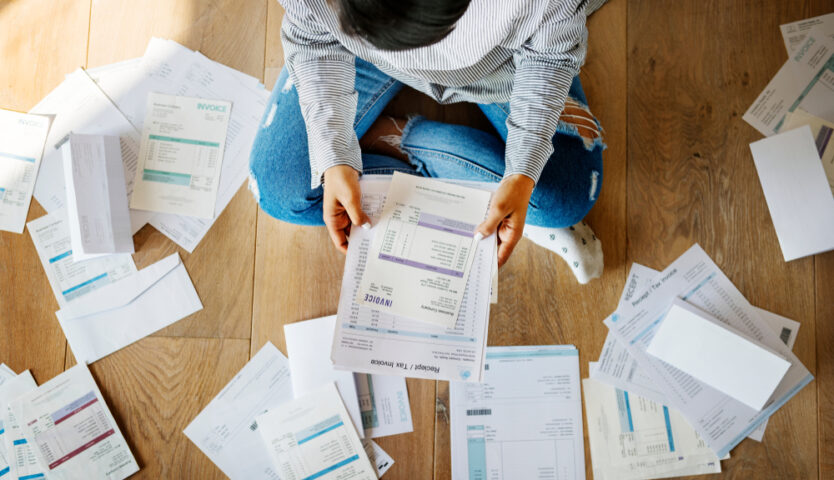What do you do if you want to change your corporate accountant but feel stuck with your current one because they have been with you for so long?
While you may be fiercely loyal to your current accountant, you should focus on putting your company’s needs first!
Switching accountants is not an overly complicated process. In fact, most of the steps are taken by your new accounting firm and regulations ensure that file and information transfers are done efficiently.
In this article, we’re going to outline those steps and show you how easy it is!
But because we don’t recommend changing your corporate accountant on a whim, let’s start with some reasons why it could be time for a change:
Reasons to Change Accountants
It’s important that you don’t simply change your corporate accountant on a whim. Here are some main reasons why business owners may seek accounting help elsewhere:
They Aren’t Available
It can be frustrating if you can’t reach your accountant when necessary. In order to make informed business decisions, you need to be able to communicate with your accountant in a timely manner.
They’re Not Easy to Talk To
Even if you can get in touch with your accountant when needed, they may be difficult to communicate with.
Between accounting jargon you don’t understand to feeling like you are not understood, it may be time to change corporate accountants if you find your current ones are not approachable.
They Don’t Understand Your Business
Unless an accountant is industry-specific, they may lack the necessary knowledge to fully understand what you need.
While many accounts are not industry-specific and can perform amazingly, you may consider switching if your current firm doesn’t “get it” when it comes to your business needs.
They Are Not Proactive
The reason you’ve hired an accounting firm for your business needs is that you don’t have the time or know-how to do it yourself.
But if your accountants aren’t being proactive and offering better services or even reminders, it may be time to choose a firm that will offer you guidance throughout the year.
They Don’t Keep Up With Technology
When it comes to running a business, technology is key to being more productive and efficient. An accounting firm that embraces technology can better serve your business needs.
You’re Paying Too Much For Their Services
Especially if they are not meeting your expectations! When you pay for accounting services, you want to make sure you are receiving value and understanding.
It’s All About Timing
Now that you have a better understanding of why you should change corporate accountants, it’s important not to jump ship right away!
Switching accountants should happen during times where your business is experiencing little to no financial activity. This could be during a slow period or even after your year-end tax return has been filed.
The last thing you want is to have files transferred between the old and new accountants during times of high financial activity. Waiting until the right time will help to reduce the stress of switching between accountants.
You’ll also want to tie up any loose ends such as ensuring that any pending payments and transactions are complete. This way, you can avoid disputes over unpaid fees that can get in the way of a smooth transition to the new accountant.
Steps to Changing Corporate Accountants
1. Notify Your Current Accountant
It’s important that you notify your current accountant as soon as possible that you are switching to a new firm. They may be willing to correct the issues you have with their services and prevent the hassle of switching to a new accountant.
However, if you cannot be swayed, it’s important to notify your current firm and end the relationship on good terms. This will help facilitate an efficient transition.
Your new accountant can help you notify your current accountant by drafting a letter of notice.
2. Have Your Files Sent to the New Accountant
By law, your current accountant must turn over your company’s files to the new firm of your choosing.
This begins with a letter of disengagement that requires your previous accountant to provide all relevant information to the new accountant.
Your new accountant will also send your previous accountant a professional clearance letter so that they can accept all necessary files and information during the transition.
3. Confirm That the Files Have Been Transferred
It’s important that you confirm with your new accounting firm that all files have been transferred by your previous accountant.
If not, you can file a complaint with your former firm’s regulatory board if an amicable file transfer is denied.
4. Approve Your New Accountant
The last step in this process is to assign authority to your new accountant. This allows them to perform tax duties on your behalf, such as filing returns.
This step also includes changing the passwords to your relevant accounts so that your former accountant no longer has access.
Questions to Ask a New Accountant
Of course, before you switch to a new accounting firm, you’ll want to make sure you are choosing an accountant that will meet your company’s needs.
Here are some questions you can ask to ensure that they are the right fit:
- Who do you normally work with?
- What services do you offer?
- What do you specialize in?
- How do you charge for your services?
- What is your response time?
- What is your turnaround time?
- What technology do you use?
- How do you communicate with your clients? (Phone, email, Skype, etc.)
- How often do you communicate with your clients?
- Are you a Chartered Accountant or part of an association?
Plus, asking these questions beforehand holds them accountable for their answers!
Ready for a Change?
If you’re thinking about leaving your current accounting firm, this information will give you a better understanding of how it works so that you can make your decision with confidence!
At Liu & Associates, our goal is to provide companies with expert accounting services that offer the support you need as well as help you maximize your business’s finances.
If you’re ready for a change, get in touch with us today!



















